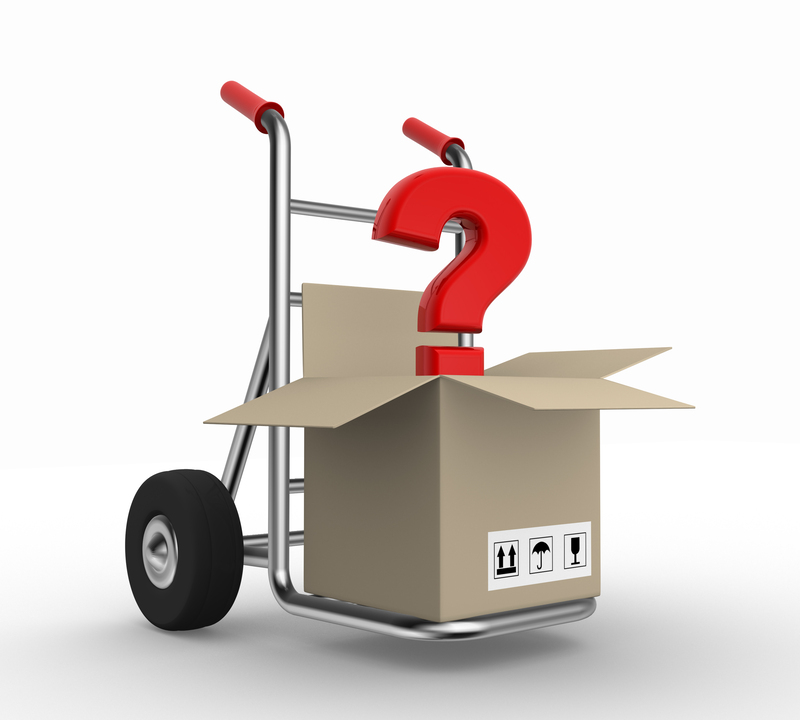How to Manage Heavy Lifts Without Assistance
Posted on 21/05/2025
How to Manage Heavy Lifts Without Assistance: Safe and Effective Solo Lifting Techniques
Managing heavy lifts without assistance can be a demanding challenge, regardless of your experience in the gym or on the job site. Whether you're striving for personal records, moving equipment, or handling weights solo, performing heavy lifts safely and efficiently is essential for injury prevention and sustained progress. In this comprehensive guide, we'll explore expert-approved strategies, safety protocols, and practical tips to help you lift heavy weights alone with confidence and minimize risk.
Why Learn to Handle Heavy Lifts Alone?
Many circumstances require individuals to lift heavy items without help: working out at home gyms, off-hours training sessions, or handling equipment on your own. While group settings and spotters are preferable, knowing how to manage heavy lifts without assistance is a valuable skill that empowers independence and flexibility. Understanding the right techniques can also prevent common mistakes leading to strains, accidents, or long-term injuries.

Understanding the Risks of Unassisted Lifting
Solo heavy lifting comes with inherent dangers. Without a spotter or helper, mistakes are less likely to be caught and corrected in time. The most common risks include:
- Muscle strains and pulls
- Joint stress due to poor form or overloading
- Crushing injuries if weight is dropped or not controlled
- Back injuries caused by improper lifting technique
Preparation: Key Steps Before Attempting Heavy Lifts Solo
1. Assess the Load
First, honestly evaluate the weight and your own capabilities. Can you move it safely? For gym lifts, avoid exceeding personal records when alone. For industrial or home tasks, check labels and use judgement.
2. Clear Your Path & Environment
- Eliminate obstacles such as stray equipment, loose carpets, or wet floors.
- Ensure there's a safe drop or bail-out zone if something goes wrong.
- Secure pets, children, or bystanders out of the lifting area.
3. Warm Up Properly
A thorough warm-up is essential for increasing blood flow, mobilizing joints, and priming muscles. Dynamic stretches and light weight exercises can help reduce injury risk.
4. Wear Appropriate Gear
- Opt for supportive shoes with a non-slip sole.
- Wear gloves for improved grip and protection.
- Consider a weightlifting belt for added lower back support.
Key Techniques for Managing Heavy Solo Lifts
With preparation complete, the following lifting techniques and strategies will greatly enhance your safety and effectiveness when lifting heavy weights without help:
1. Use Proper Lifting Form
- Keep your back straight and hinge at the hips, not the waist.
- Engage your core to stabilize your spine throughout the lift.
- Lift with your legs, not your back, by driving through your heels.
- Keep the weight close to your body to reduce leverage and strain.
2. Master Controlled Movements
Avoid jerky or rapid lifts. Move slowly and deliberately--especially when lowering a heavy item--minimizing sudden shifts in balance or form.
3. Use Mechanical Advantage When Possible
- For awkward objects, utilize leverage (e.g., tilting an object onto its side before lifting).
- Employ handles, grips, or lifting straps if available.
- Consider using ramps, sliders, or dollies for transport instead of manual carrying.
4. Break Down the Load
When feasible, disassemble large items or divide the load into smaller, more manageable pieces. This "divide and conquer" approach prevents injury and fatigue.
5. Use Rest-Pause and Partial Range Techniques
- For barbell movements, employ rest-pause reps--rest briefly mid-set to recover grip and form.
- Partial range of motion is a safer way to train strength near failure when alone.
Gym Strategies for Solo Heavy Lifting
If you're managing heavy lifts without a spotter in the gym, there are additional tactics to maximize safety:
1. Set Up Safety Bars and Spotter Arms
- Power racks and cages allow you to set safety bars at the appropriate height.
- Adjust the bars so the weight will not trap you if you miss a rep (especially important for bench press or squats).
2. Favor Dumbbells Over Barbells
Dumbbells are easier to bail from compared to a barbell, which might pin you. Choosing dumbbells reduces the risk of being stuck under a failed lift.
3. Practice Barbell Bail-Out Techniques
- Learn how to safely roll a bar off your body during a failed bench press.
- For squats, practice dropping the bar backward (with bumper plates) if you can't stand up.
- Never use collars when benching or squatting heavy alone--so you can tilt the bar and slide plates off in an emergency.
4. Monitor Your Fatigue
Pay close attention to mental and physical fatigue. End sets before form breaks down--failure to do so while alone can have dire consequences.
At-Home Heavy Lifting: Moving Furniture, Appliances, or Equipment Alone
Outside the gym, many people face the challenge of moving items like furniture, appliances, or construction materials without help. These tips will help you move heavy objects safely and efficiently:
1. Slide, Don't Carry
- Use furniture sliders or blankets to slide heavy items across floors rather than lift them.
- For appliances, tilt and slide onto hard surfaces to minimize effort.
2. Leverage Tools and Equipment
- Dollies, hand trucks, and lifting straps dramatically reduce strain on your joints and muscles.
- For stairs, use a stair-climbing dolly with proper guides.
3. Create Handles or Grip Points
If the item lacks handholds, attach makeshift handles using rope or strong tape, or use moving straps under the item to improve leverage and stability.
4. Rest and Reposition
- Don't rush--pause frequently to assess your grip, balance, and fatigue.
- Set the item down in controlled stages if needed, changing your grip as necessary.
Common Mistakes People Make When Lifting Heavy Alone
Even experienced lifters can fall victim to risky errors while managing heavy lifts without anyone's help. Here's what to avoid:
- Overestimating your strength capacity--never attempt a lift you're unsure about
- Neglecting warm-ups or proper gear
- Lifting with poor posture or using your back instead of legs
- Failing to plan the path or environment
- Pushing through fatigue or pain
- Ignoring cues from your body--if something feels off, stop immediately
Injury Prevention Strategies for Solo Heavy Lifting
Protecting yourself is the top priority when lifting by yourself. Implement these practices to stay safe:
- Regularly strengthen your core and stabilizer muscles to support heavy lifts.
- Use incremental loading--increase weights gradually to allow your body to adapt.
- Stay alert for warning signs such as popping, sharp pain, or sudden fatigue.
- Warm up and cool down with stretches and light activity before and after heavy lifts.
- Consider periodic professional evaluations of your lifting form (via online trainers or apps).
Alternative Approaches: Using Technology and Assistive Devices
Today's modern tools make lifting heavy loads alone safer and easier than ever. Explore these options:
- Smart gym equipment like Smith machines or guided resistance devices provide stability and bail-out options for solo gym users.
- Lifting aids such as lifting hooks, gloves, and straps improve grip and distribute force for safer handling.
- Mobile apps can provide video feedback on form or alert you in case of irregular movements.
- Wearable sensors can monitor your posture and movement and sound alarms for unsafe lifting angles.
When to Ask for Help: Recognizing Your Limits
Even with excellent technique and the right equipment, sometimes the safest option is to ask for assistance. Listen to your body: if you experience dizziness, lose your grip, or realize an object is simply too heavy or unwieldy, don't risk injury. Recruit a partner, use professional movers, or break the job into multiple smaller efforts.
Summary: Your Safe Path to Heavy Lifts Without Assistance
Managing heavy lifts without help isn't simply about raw strength--it's a combination of preparation, technique, environment, and the right tools. By taking a systematic approach, using mechanical aids, and prioritizing safety, you can successfully lift heavy alone while minimizing your risks. Remember, progress is a marathon, not a sprint; proper form and caution always trump ego for long-term strength and wellness.

Frequently Asked Questions
Can I safely lift heavy weights alone in the gym?
Yes, but use safety bars, favor dumbbells, avoid maximal efforts, and stop sets when fatigue threatens your form. Know bail-out techniques for barbell lifts.
What are the best tools to help lift heavy items alone?
Dollies, straps, furniture sliders, and sturdy gloves rank among the safest and most effective tools for solo heavy lifting tasks.
What should I do if I feel pain or something goes wrong during a solo lift?
Stop immediately, set the item down safely, assess your condition, and seek medical attention if there's any doubt. Never attempt to "push through" significant discomfort or pain.
Final Words
With the right approach and respect for your own limits, managing heavy lifts without assistance is entirely possible--and can even be empowering. Stay smart, practice safe lifting, and enjoy the confidence that comes from self-sufficiency and strength.
```






